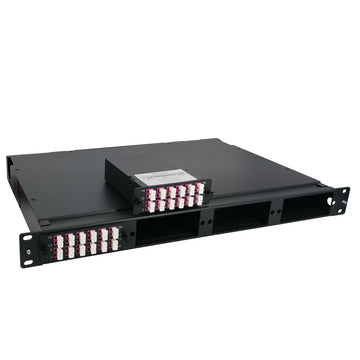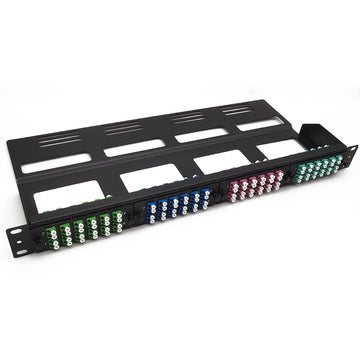WDM/OTN: Transmission Technology
WDM/OTN: Transmission Technology
Modern optical technologies reach the Terabit range and revolutionize the network world. The course takes an inventory and shows development trends. It discusses the major changes in the fields of optical fiber types, access, and backbone, as well as optical networks and network protection and gives a compact overview of the innovative potential of high-performance, optical technologies.
WDM (Wavelength Division Multiplexing) is a technology that uses different light waves to carry different services and transmits multiple services simultaneously in the same fiber. OTN (Optical Transport Network) can be seen as an optimized and upgraded version of WDM. Let’s talk about these two technologies below.
What Is WDM?
Wavelength division multiplexing (WDM): The WDM technology multiplexes optical signals of different wavelengths into one fiber for transmission (each wavelength carries one service signal). The WDM technology is mainly used for transmission and multiplexing.
Before the WDM technology, all transmission technologies allow one fiber to transmit only one wavelength, whereas WDM technologies allow one fiber to transmit multiple wavelengths. Currently, a common WDM system includes 8 (coarse wavelength division multiplexing, CWDM), 40, 80, 96, or 120 wavelengths. Carrying more wavelengths is one of the future evolution trends of WDM.
What is OTN?
From the above introduction, we can conclude that the biggest advantage of WDM technology is that it makes good use of the resources of optical fibers and can provide large-capacity data transmission. However, WDM also has the following disadvantages:
- If the service”package” on the WDM vehicle has an error during transportation, there is no way to identify it. That is, the WDM system has a weak ability to monitor, manage, operate and maintain services.
- If a service is transmitted on the designated channel of the WDM system, the channel cannot be used by other services, which will cause a waste of resources. It’s like the lane of each vehicle is fixed on the highway, even if the lane is free, other types of vehicles cannot use this lane.
With the development of communication networks, the amount of data on the data network has increased rapidly, and experts have to continue to develop the potential of WDM and improve its capabilities of WDM, so a new technology was born – OTN.
As mentioned earlier, the WDM system is similar to the highway traffic system, and the OTN is its upgraded version. Its upgraded functions are mainly reflected in the following two aspects:
- Add operation and maintenance rules. The specific measures are to increase the frame structure to improve the monitoring, management, and operation and maintenance capabilities of the service.
Comparison of WDM and OTN systems
In the WDM system, the service without wavelength information entering the WDM system is merely converted into service with wavelength information, and placed in the system for transmission. That is to say, the WDM system has no monitoring mechanism for the transmitted services, and only ensures that the services can be transmitted to the receiving end.
In the OTN system, a set of rules for putting services into the OTN system is provided, that is, the so-called frame structure requirements. The services entering the OTN system will be packaged according to the OTN frame structure requirements, that is, adding monitoring, management, operation, and maintenance information. And then the services are converted into ones with wavelength information and sent to the OTN system for transmission.
- An electrical crossover function is added so that the OTN system can process customer service signals and WDM signals respectively.
As mentioned above, the customer service signals need to be converted into wavelength division signals for the WDM system to transmit customer services. When the traditional WDM system processes this function, it is directly implemented through the same single board, and each customer service needs to occupy one lightwave carrier. When there are more and more types of customer services on the network, in order to transmit these services in the WDM system, it is necessary to develop new boards to carry these services, which will increase the cost of network construction;
On the other hand, these services will also occupy more light waves, resulting in resource shortages.
Conclusion
To sum up, OTN is an optimization of WDM, which further improves the operation and maintenance capabilities and flexible resource scheduling capabilities of WDM systems.
In a word, WDM/OTN technology acts as a large-capacity transportation system of data networks nowadays. It continuously transmits these “goods” of information data with higher reliability, higher flexible scheduling capability, and higher resource utilization rate.
Next, we will discuss the progress and evolution trend of OTN technology.












